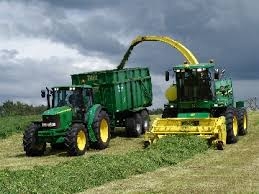
The El Nino weather pattern continues with the North Island mostly achieving good pasture growth rates but these are predicted to ease as dry cooler conditions have tempered the spring flush.
Less rain and warmer conditions in the deep south has seen production improve, but big numbers of cull cows are still appearing in southern saleyards and dairy cow numbers are predicted to drop nationally by 3% this year.
Cuts of silage are now evident everywhere in the North, and with signs of seed head emergence southern managers are shutting up surplus grass, helped in many instances by a lower stocking rate.
Dairy farmers have adjusted rapidly to the new financial climate and some nationally have been achieving even better production after refocusing on improved pasture management, although others have chosen to cull hard, lower costs and take the production drop on the chin.
Jersey breeders believe their animals are better able to cope with the present financial climate promoting their stocks ability to be superior converters of feed to profit, and producing more ms per ha than heavier breeds.
The national spring milk peak arrived for Fonterra on 19 October and was 4% lower than last year, but they do report the capital investment in new plant has enabled them to process more milk into higher paying products this year.
Analysts suggest the seasons drop will be 6% this year and with the big cow cull and an impending El Nino there is little prospect an improvement later in the year will make any difference.
The milk market is still seeking direction with Oceania prices stalled and milk futures trades suggesting a small fall maybe likely at this week’s GlobalDairyTrade auction.
And that indeed did play out, with another fall at auction last night this time by over 7%, led by lower whole milk prices of US $2453/tonne, still well short of that $3000/tonne needed for Fonterra's $4.60 payout.
While NZ farmers have responded to the market call to lower production the global market has failed to follow, and buyers are sourcing their product cheaply from elsewhere, mainly Europe, but bank analysts still believe as NZ is the largest exporter of whole milk powder the adjustment will come.
Voting is underway for Fonterra governance amid a testy discussion about board numbers lead by two past directors who believe a reduced size would focus the decisions makers firmly on the original co-operative principles.
Nationally there has been strong interest by dairy farmers using Wagyu genetics over their Friesian Jersey cross cows, which is estimated to lift the bobby calf value from $20 to $150 ahead and produce an animal sought after in the Japanese beef market.
After early sales showed weaner dairy bull buyers were paying a premium over last year for replacements the market seems to have cooled following the easing prime schedules downward at rates similar to last year.
Dairy prices
Select chart tabs
4 Comments
Sent some bulls to the works today, the driver tells me he is trucking a lot of cows to the works still, interesting time of year to be killing dairy cows.
Volumes at auction must be a worry.
http://www.attenbabler.com/global-dairy-trade-results-update-gdt-price-…
It will be interesting to see if Fonterra keeps payout at $4.60 later this month. GMP will have it's last outing in December. :-(
How much did you manage to lock in. Bloody cold and wet here, must be miserable in Southland.
Could have locked in up to 75% but chose to lock in a bit less. You lock in an actual number of kgs which makes doing a cashflow/budget so much easier. It affects our sharemilkers as much as us, so it has to be something we both agree on.
It has been cold down south but they had a beautiful day recently when I was there. Could do with a few more :-)




We welcome your comments below. If you are not already registered, please register to comment.
Remember we welcome robust, respectful and insightful debate. We don't welcome abusive or defamatory comments and will de-register those repeatedly making such comments. Our current comment policy is here.